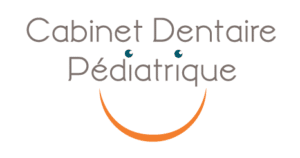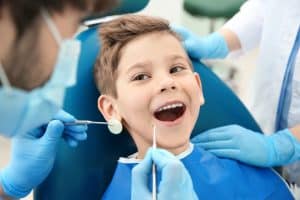A dental trauma in children corresponds to an injury on one or more teeth, gums, lips or jaw, caused by an impact. The incisors and upper canines are generally the most affected.
Dental trauma is not limited to the teeth: after a blow or a fall, the mucous membranes, the gums or the bones of the mouth can also be affected.
It is more common in children than in adults. In babies and toddlers, dental trauma is often caused by:
- Learning to walk
- Lack of coordination and balance
- The absence of protective reflexes.
In children over 3 years old until adolescence, dental trauma comes more often :
- Recreational accidents
- The practice of physical activities
- Games.
In order to know how to react in case of dental trauma in babies or children, it is important to differentiate between them.
Dental trauma: expulsion of a tooth
Dental trauma on a baby tooth
If a baby tooth is knocked out, don't rush to find it: it won't be replaced. Start by rinsing your mouth with cold water and applying a cool compress.
Then contact your pedodontist's office to discuss the situation. Don't hesitate to ask for advice and make an appointment for a check-up as soon as possible.
Dental trauma on a permanent tooth
Unlike the previous situation, you will need to find the expelled tooth. Rinse it with cold water without using soap or rubbing it. In order to preserve the vitality of the tooth, place it in :
- Milk
- The child's saliva
- Saline solution.
Once you have performed the initial treatment of your child's dental trauma, contact your pedodontist quickly for an emergency appointment within two to four hours.
Dental trauma in children: broken or cracked tooth
In the event that the impact has fractured or cracked one or more teeth, begin by soothing the child's pain with cold water. Rinse the mouth and apply compresses.
If tooth fragments have fallen out, consider retrieving them. Keep them in milk, saliva or saline as well.
Call your child's dentist quickly to make an emergency appointment. Don't hesitate to ask the office about what to do to avoid any complications.
Lesions of the supporting tissues of the tooth
Following a fall or a blow, dental trauma in children can also occur in the tissues and bones of the mouth:
- Cheek
- Lips
- Gums
- Language
- Etc.
If the wounds are bleeding, hold a sterile compress down for several minutes to stop the bleeding. If the mouth shows signs of bruising or swelling, apply compresses or a clean cloth soaked in cold water.
Then contact your pedodontist to inform him or her and ask for advice on the situation. The practitioner will tell you what to do and schedule a follow-up or emergency appointment.
How to avoid dental trauma in children?
On a daily basis, a few simple habits can be adopted to limit the risks of dental trauma in children.
For healthy and not weakened teeth, a good food and oral hygiene is essential. Regular check-ups at the pedodontist's also help to prevent dental problems.
Finally, when practicing a physical or risky activity, remember to equip your child with appropriate protection:
- Wearing a helmet while cycling
- Mouthguards for combat sports
- Etc.
Whatever the nature of the dental trauma in a child, it is strongly advised to go to a pedodontist as soon as possible. Specialized in pediatric dentistry, this health professional will perform a check-up or intervene in an emergency to treat the teeth.
Dr. Agachi's office, pedodontist in Paris, intervenes for any emergency or dental trauma in children. Do not hesitate to contact us as soon as possible after the shock, our team will indicate you the good gestures to adopt according to the situation.
Depending on the degree of urgency, we will schedule an appointment as soon as possible.
Frequently asked questions about dental trauma in children
First, reassure the child. Rinse the child's mouth with cold water and apply a damp compress to the site of the shock. You can then call a dentist.
If it is a permanent tooth, pick up the tooth or tooth pieces and store them in milk, saline or the child's saliva. Then call the dentist or pedodontist.


